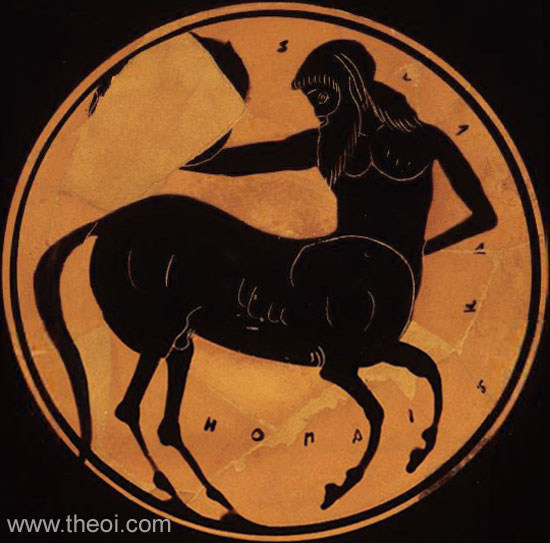I've often wondered about this. Do centaurs have an extra pelvis or does the spine just curve? If the latter, how are the vertebrae arranged?
I know, I know; I need a hobby.
Next up: Thark arms. How the heck do you fit the lower pair on the rib cage?

5 comments:
To answer questions 1 and 2, they're jointed
Like the inside of a Rubic's Cube.
The most-often-overlooked problem is the necessary augmentation of the brain's motor centers to handle an extra pair of limbs. Granted, insects do it, but we still don't entirely understand how their motor centers work.
As for thark arms, they need a second collarbone/shoulder joint assembly midway down the spine. The ribcage almost certainly has a "gap" to allow the lower shoulder assembly to pivot and rotate without interference. Meaning that the lower arms will necessarily be lighter and probably weaker than the upper set. (Think the lower "false hands" and upper "true hands" of the four-armed Mardukans in Ringo & Weber's "Prince Roger" novels.)
This means that in a fight, the armpits below and just in front of the thark's (or Mardukan's) lower arms is a vulnerable point, as the gap means the vitals are poorly protected at those points. An excellent place for a sword-thrust, a dagger, or just a well-placed kick.
Although IMHO, if you're going CQB with somebody like that, you're not thinking. I subscribe to the Indiana Jones school of sword fighting as a general rule. (I.e., I can do it, but I prefer to just shoot the... gentleman.)
cheers
eon
PS- Re the photo of the bearded guy centaur wannabee; Ow. Brain bleach, aisle three.
eon: consider that the centaurs (with one notable exception I can think of) were not known for their mental prowess. Argal, the extra motor smarts fit into a human-sized brain-case, at the expense of smart smarts. Explains things very neatly, I think.
I can see an extra pair of strong arms. At the expense of range of motion, maybe. Human shoulder muscles anchor in the thoracic spine (easily duplicated), clavicles (can be duplicated, bearing in mind that clavicles also articulate with the sternum), scapulae (can be duplicated), and sternum. If you double the length of the sternum, maybe with a hinge-type joint in the middle so the trunk can bend at the second waist, and add a set of clavicles, all you're missing is a strong anchor point like the one in the upper thoracic/cervical vertebrae. The lower arms won't be as mobile, but if they also have muscles that anchor in the pelvis, can actually be stronger. Thing to keep in mind: if you want to be bipedal, you need a flexible trunk to maintain balance. Compare the fatigue from walking normally with that from walking strapped into a 50-lb external frame backpack, which holds your spine rigid.
Interesting question: what about a six-limbed flying beastie? It is an accident (I think) that our Devonian ancestors had four lobe fins instead of six. An extra pair of limbs opens up all kinds of possibilities. Why, I could be scratching my back while I type, for instance!
Agg! Reading over that, I forgot about the latissimus dorsi, which is certainly an important shoulder muscle. That originates in any vertebrae it can catch, plus the pelvis and sacrum. Might be difficult to provide such a hard point for the upper set of arms.
Sergej;
Good point about the evident lower IQ of centaurs. This could also explain why insects generally aren't rocket scientists, either; too much brain mass devoted to simple motor control. Combined with the Square-Cube law, this makes intelligent, large-sized insectoid species even less likely.
I agree that you ~could~ have strong lower arms at the expense of range of motion. (As in, "I hadn't thought of that one, myself".) Which means that it's entirely possible for a four-armed Thark to use a stabbing/pole weapon like a pike with the strong lower arms, reserving the more dextrous upper ones for his sword, or radium gun.
As for a six-limbed flying beastie, that would almost require a "second brain", like the aft dorsal swell of the spinal cord the Diplodocus and Apatosaurus were supposed to have to tell their tails what to do. I'd expect it to be on the spine just about even with the wing-root junctions, just to keep "transmission dwell time" down.
cheers
eon
Post a Comment